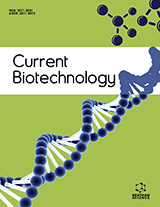Abstract
Hydrogen production involves the use of hydrogenase (H2ase) enzyme, especially for photohydrogen production. Specific detection of fermentative hydrogen producing bacteria from the microbial communities is achieved based on the universal Iron-hydA primers. In the present study, the primers for the H2ase gene were designed, followed by the isolation of the DNA from the selected hydrogen producing microorganisms. Amplification of the genome by the designed primers were carried out by the polymerase chain reaction. The PCR primers designed were HyF, Hyff, HyR and Hyrr. The primers were analyzed and best fitted by the computer aided program. The resulted primers were amplified (400 bps) from the genome of the selected hydrogen producing microorganisms. This work was carried out as a preliminary assay in molecular cloning of hydrogenase genes by primer designing from the selected strains for the improvement of hydrogen production process.
Keywords: Hydrogen production, hydrogenase gene, nitrogenase gene, DNA isolation, PCR primers, primer designing, HyF, Hyff, HyR and Hyrr, gene amplification, Hydrogen uptake, autotrophic, thermophilic, oxidizing bacterium, H-cluster
Current Biotechnology
Title:PCR Designing and Amplification of Partial Hydrogenase Gene from Selected Hydrogen Producing Microorganisms
Volume: 1 Issue: 3
Author(s): A. G. Murugesan, S. Yoga Chithra and K. Bala Amutha
Affiliation:
Keywords: Hydrogen production, hydrogenase gene, nitrogenase gene, DNA isolation, PCR primers, primer designing, HyF, Hyff, HyR and Hyrr, gene amplification, Hydrogen uptake, autotrophic, thermophilic, oxidizing bacterium, H-cluster
Abstract: Hydrogen production involves the use of hydrogenase (H2ase) enzyme, especially for photohydrogen production. Specific detection of fermentative hydrogen producing bacteria from the microbial communities is achieved based on the universal Iron-hydA primers. In the present study, the primers for the H2ase gene were designed, followed by the isolation of the DNA from the selected hydrogen producing microorganisms. Amplification of the genome by the designed primers were carried out by the polymerase chain reaction. The PCR primers designed were HyF, Hyff, HyR and Hyrr. The primers were analyzed and best fitted by the computer aided program. The resulted primers were amplified (400 bps) from the genome of the selected hydrogen producing microorganisms. This work was carried out as a preliminary assay in molecular cloning of hydrogenase genes by primer designing from the selected strains for the improvement of hydrogen production process.
Export Options
About this article
Cite this article as:
G. Murugesan A., Yoga Chithra S. and Bala Amutha K., PCR Designing and Amplification of Partial Hydrogenase Gene from Selected Hydrogen Producing Microorganisms, Current Biotechnology 2012; 1 (3) . https://dx.doi.org/10.2174/2211550111201030212
| DOI https://dx.doi.org/10.2174/2211550111201030212 |
Print ISSN 2211-5501 |
| Publisher Name Bentham Science Publisher |
Online ISSN 2211-551X |
 7
7
- Author Guidelines
- Bentham Author Support Services (BASS)
- Graphical Abstracts
- Fabricating and Stating False Information
- Research Misconduct
- Post Publication Discussions and Corrections
- Publishing Ethics and Rectitude
- Increase Visibility of Your Article
- Archiving Policies
- Peer Review Workflow
- Order Your Article Before Print
- Promote Your Article
- Manuscript Transfer Facility
- Editorial Policies
- Allegations from Whistleblowers
- Announcements
Related Articles
-
Pertussis Vaccines: State-of-the-Art and Future Trends
Current Topics in Medicinal Chemistry Vaccine Ingredients: Components that Influence Vaccine Efficacy
Mini-Reviews in Medicinal Chemistry Antioxidant Activity of Resveratrol Analogs
Letters in Drug Design & Discovery The First Kinetic Enzymatic Resolution of Methyl Ester of C75
Letters in Organic Chemistry Thalidomide: A Banned Drug Resurged into Future Anticancer Drug
Current Drug Therapy Therapeutic Outlook of Pyrazole Analogs: A Mini Review
Mini-Reviews in Medicinal Chemistry Patent Annotations
Recent Patents on Anti-Infective Drug Discovery Meet Our Editor:
Current Enzyme Inhibition Small Molecules for the Activation of Human γ δ T Cell Responses Against Infection
Recent Patents on Anti-Infective Drug Discovery Liposomes as Nanovaccine Delivery Systems
Current Topics in Medicinal Chemistry Synthesis of Marine Natural Products with Antimalarial Activity
Mini-Reviews in Medicinal Chemistry Archaeosome Immunostimulatory Vaccine Delivery System
Current Drug Delivery Modulation of Proinflammatory Bacteria- and Lipid-Coupled Intracellular Signaling Pathways in a Transwell Triple Co-Culture Model by Commensal Bifidobacterium Animalis R101-8
Anti-Inflammatory & Anti-Allergy Agents in Medicinal Chemistry Incidental Extracardiac Findings on Coronary Computed Tomography Angiography: A Pictorial Review of Imaging Findings
Current Medical Imaging Recent Advances in Antifungal Agents
Mini-Reviews in Medicinal Chemistry Mathematical Descriptors for the Prediction of Property, Bioactivity, and Toxicity of Chemicals from their Structure: A Chemical-Cum-Biochemical Approach
Current Computer-Aided Drug Design Clinical and Regulatory Status of Silymarin
Applied Drug Research, Clinical Trials and Regulatory Affairs Meet Our Editorial Board Member
Current Medicinal Chemistry Combining Quantum-Behaved PSO and K2 Algorithm for Enhancing Gene Network Construction
Current Bioinformatics The Relative Transcription Index: A Gene Expression Based Metric for Prioritization of Drug Candidates
Combinatorial Chemistry & High Throughput Screening























